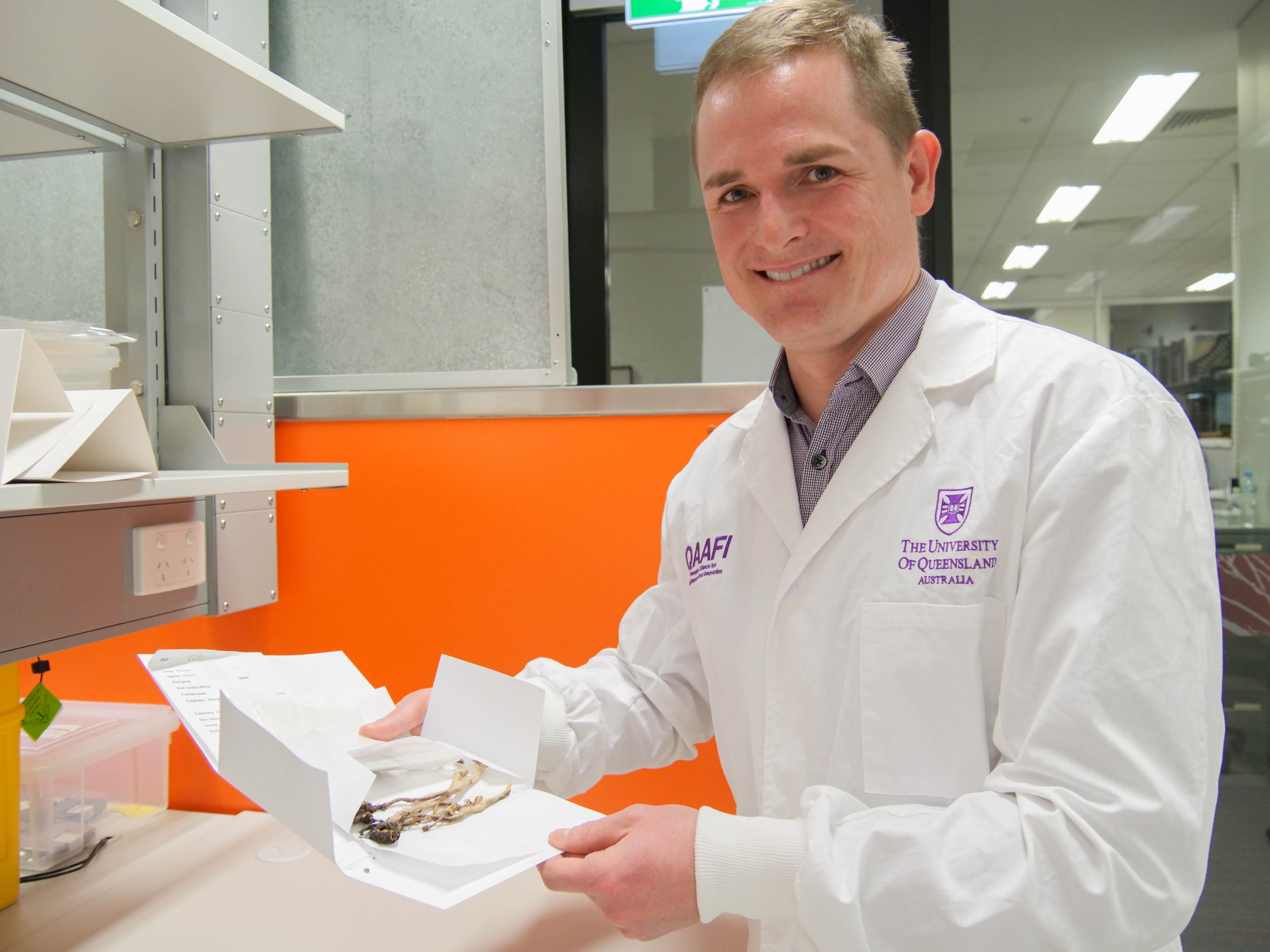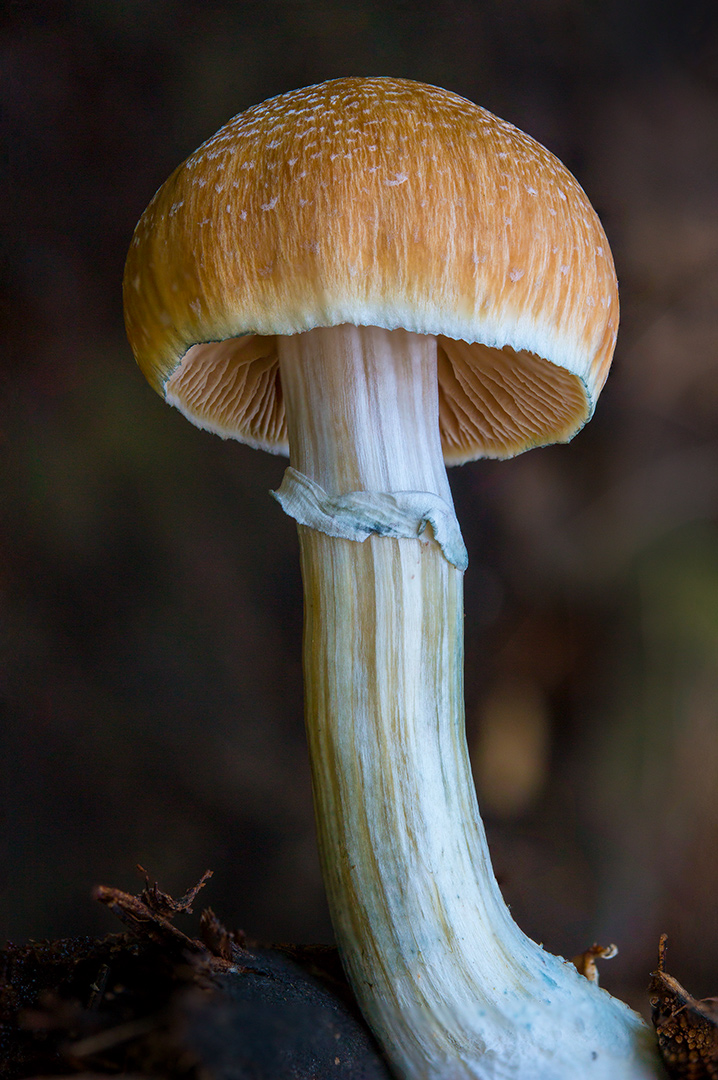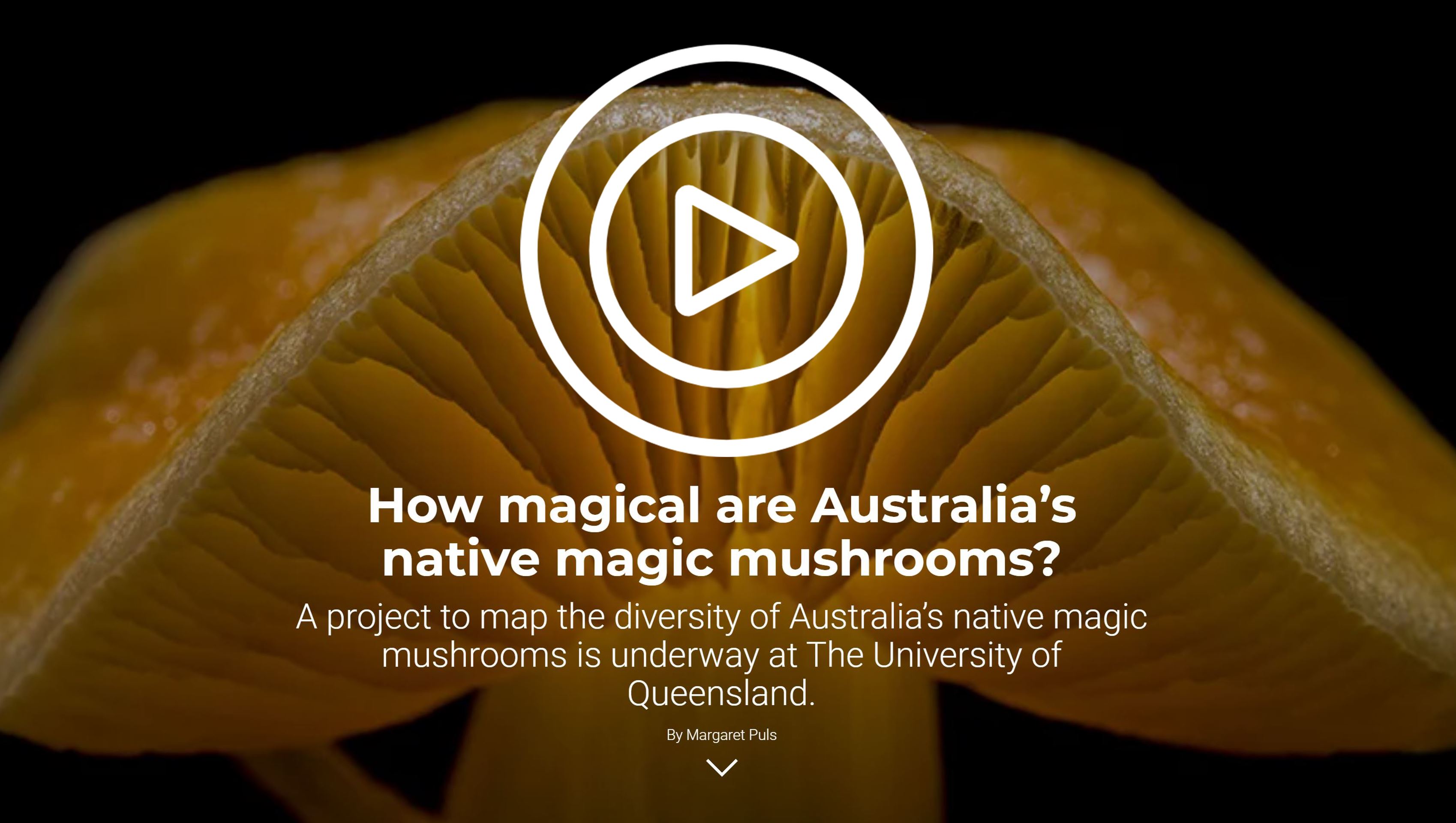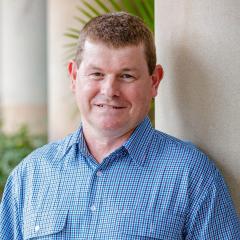Australia’s first legal, living collection of native magic mushrooms is being studied by scientists in a Brisbane laboratory to help identify characteristics that might be useful for medical research into psychedelic treatments.
University of Queensland mycologist and evolutionary biologist Dr Alistair McTaggart said Australian magic mushrooms were unique from international species, but scientists had little understanding of them.

“In Australia, it is estimated there are up to 20 species of magic mushrooms, some of which are native, while others have been introduced,” said Dr McTaggart.

“They grow in dung or in leaf litter on damp forest floors.
“We are not certain of magic mushroom biodiversity in Australia, and we do not know how many species produce psilocybin – a psychoactive compound with effects similar to LSD.”
More than 200 species of mushrooms worldwide are known to produce psilocybin.
In a new research project underway at UQ's Queensland Alliance for Agriculture and Food Innovation, Dr McTaggart will investigate the diversity of native magic mushrooms in Australia, following State Government approval for UQ to use psilocybin for research, analysis and teaching.
He said there was renewed global interest in the psychoactive properties of magic mushrooms for treating depression and post-traumatic stress disorder.
Dr McTaggart believes the current global research interest in magic mushrooms is similar to where the medicinal cannabis industry was 15 years ago.
“Similar to the cannabis industry, mushrooms will need selection of genetic traits to upscale production or tailor different strains for different experiences,” he said.
“Australian native magic mushrooms may have evolved different methods for psilocybin production and offer adaptations that are preferential for use in clinical treatments.
“Our new project will determine whether one species which is believed to be native, Psilocybe subaeruginosa, has spread globally.

“This species, or a close relative, is now the foundation of patents and research in Europe and the United States.”
Approval under the Health (Drugs and Poisons) Regulation 1996 (Qld) allows Dr McTaggart to possess, use and dispose of limited quantities of psilocybin, for the specific purpose of research, analysis and teaching.
Without this approval, the possession and use of psilocybin is prohibited in Queensland – including for native psilocybin-producing mushrooms.
“Consuming magic mushrooms can be dangerous – they can be mistaken for toxic mushrooms,” Dr McTaggart said.
In another project in development, Dr McTaggart plans to use genomic sequencing to determine which species of native mushrooms in Australia (not magic mushrooms) are edible, poisonous or adaptable for medicinal use.
This work is funded through UQ’s Research Support Program.
 Explore more about this story: 'How magical are Australia’s native magic mushrooms?': A project to map the diversity of Australia’s native magic mushrooms. Online story here.
Explore more about this story: 'How magical are Australia’s native magic mushrooms?': A project to map the diversity of Australia’s native magic mushrooms. Online story here.
Contact researcher: Dr Alistair McTaggart, E: a.mctaggart@uq.net.au, T: +61 403 199 744 or qaaficomms@uq.edu.au
Contact UQ media team by phone: +61 (0)7 3365 1130, mobile: +61 429 056139 or communications@uq.edu.au
Photos for media are available for download from Dropbox. Credit should be given to acknowledge the photographer by name. Top banner image caption: Psilocybe cubensis – “golden top” magic mushroom grows wild throughout Australia. Image: © Paul Vallier.
Related articles:
'Psychedelic renaissance' sees first legal collection of Australia's medicinal magic mushrooms - ABC Rural news article by Jennifer Nichols, published on 30 August 2021. Researcher takes a trip into the world of Australian native "magic mushrooms" - Good Fruit & Vegetables news article published on 30 August 2021, The Land news article published on 30 August 2021, Stock & Land news article published on 30 August 2021, India Education Diary news article published on 30 August 2021. New research to look into the potential medicinal value of Australia's "magic" mushrooms - China.Org.Cn



